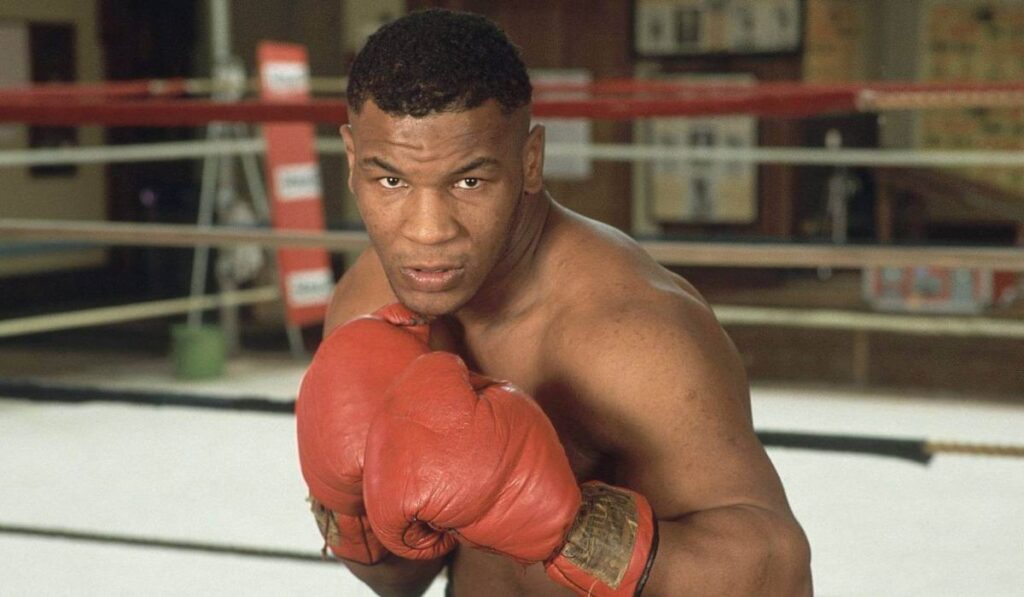Mike Tyson Net Worth 2025, a name that echoes through the annals of boxing history, remains one of the most controversial, intriguing, and richest athletes in the world.
From his shocking rise to fame to his notorious financial troubles and dramatic comeback, Tyson’s life is a story of extremes.
In this article, we will take an in-depth look at Mike Tyson’s net worth in 2025, how he accumulated and lost vast fortunes, his investments, lifestyle, and how he turned his life around.
What is Mike Tyson Net Worth in 2025?
| Year | Net Worth |
|---|---|
| 2020 | $3 million |
| 2021 | $10 million |
| 2022 | $20 million |
| 2023 | $25 million |
| 2024 | $28 million |
| 2025 | $30 million |
As of 2025, Mike Tyson’s net worth is estimated at $30 million. While this may seem like a fraction of his peak fortune, Tyson’s financial journey has been anything but conventional.
At the height of his career, Tyson was worth an estimated $300 million, thanks to his lucrative boxing career, endorsements, and investments.
However, a series of personal issues, extravagant spending, and a high-profile bankruptcy have led to his current financial standing.
Breakdown of Tyson’s Wealth in 2025:
Here’s a table summarizing the key financial details for Mike Tyson:
| Financial Aspect | Amount |
|---|---|
| Current Net Worth (2025) | $30 million |
| Peak Net Worth | $300 million |
| Total Fight Earnings & Endorsements | $430 million |
| Bankruptcy Debt | $23 million |
His fortune is composed of several revenue streams, from boxing matches to business ventures in cannabis, personal appearances, and even movie roles.
Tyson’s ability to maintain relevance in pop culture through media appearances and investments has also contributed to his net worth.
Mike Tyson’s Spending Habits: From Fortune to Bankruptcy
Mike Tyson’s financial journey is a tale of extreme highs and devastating lows. Known for his lavish lifestyle, Tyson often indulged in expensive tastes, from luxury cars to jewelry, and even exotic animals like Bengal Tigers.
However, Tyson’s extravagant lifestyle eventually led him to bankruptcy. In 2003, Tyson filed for bankruptcy, citing debts of over $23 million.
His reckless spending, poor financial management, and legal troubles were major contributors to his financial downfall.
Lavish Purchases:
| Item | Cost |
|---|---|
| Ferrari F50 | $2 million |
| Golden Bathtub | $2 million |
| Bengal Tigers | $70,000 each |
While Tyson faced financial ruin, his story is not one of defeat. He slowly rebuilt his fortune and is now more cautious with his money, focusing on investments and businesses that provide steady returns.
Career Earnings: A Boxing Legend’s Fortune
Mike Tyson’s career earnings are nothing short of staggering. Over the span of his boxing career, he earned $430 million from fights, endorsements, and various business ventures. His most significant earnings came from his pay-per-view (PPV) events, where he earned millions per fight.
Key Earnings from Notable Fights:
| Fight/Event | Earnings |
|---|---|
| Fight Earnings (Lennox Lewis) | $103 million |
| Roy Jones Jr. Fight (Sponsorships and Earnings) | $50 million |
| Jake Paul Fight | $20 million |
While Tyson’s earnings from boxing were substantial, his most significant financial missteps came from his lavish spending, as well as lawsuits and criminal charges that drained his finances. However, in recent years, Tyson has focused on different avenues to rebuild his wealth.
The Roy Jones Jr. Fight: A Financial Windfall
In 2020, Tyson faced off against fellow boxing legend Roy Jones Jr. in an exhibition match. The fight was a significant financial success, with millions of viewers tuning in to watch the bout. Tyson earned substantial sums from pay-per-view (PPV) sales, ticket sales, sponsorships, and more.
Fight Financial Breakdown:
- Total Revenue Generated: $50 million (in sponsorships and earnings)
- Pay-Per-View Earnings: $20 million
- Event Revenue: $30 million from ticket sales and sponsorships
The Roy Jones Jr. fight showcased Tyson’s continued appeal in the world of boxing and reaffirmed his relevance in the modern boxing world, helping him secure financial stability moving forward.
Mike Tyson Early Life and Background

Born in Brooklyn, New York, in 1966, Tyson’s early life was marked by hardship. Raised in a rough neighborhood, Tyson’s life was shaped by poverty and criminal activity.
His father abandoned the family when Tyson was just two years old, leaving his mother to raise him in a challenging environment. Tyson spent much of his youth in and out of juvenile detention centers.
Despite his troubled upbringing, Tyson found stability and purpose in boxing. His early mentor, Cus D’Amato, saw Tyson’s potential and took him under his wing.
Under D’Amato’s tutelage, Tyson became focused and disciplined, eventually becoming the youngest heavyweight champion in boxing history.
Mike Tyson’s Early Boxing Career: From Golden Gloves to Pro
Tyson’s rise through the amateur boxing ranks was nothing short of meteoric. He won the Junior Olympics gold medal and several Golden Gloves titles before turning professional at the age of 18.
His aggressive, knockout-oriented fighting style, coined the “peek-a-boo” technique, made him an instant sensation.
Tyson’s transition from amateur to professional was swift. By 1986, just four years after turning professional, Tyson had become the youngest heavyweight champion in history at the age of 20. His ferocious style and powerful punches made him a feared figure in the ring.
Breakthrough Moment: Becoming the Youngest Heavyweight Champion
Tyson’s breakthrough came on November 22, 1986, when he defeated Trevor Berbick to claim the WBC Heavyweight Championship. This victory made Tyson the youngest heavyweight champion at the age of 20.
The win solidified Tyson as a major force in the boxing world and marked the beginning of a dominant reign in the heavyweight division.
Tyson’s rise to the top was not only remarkable due to his age but also because of his ability to overwhelm opponents with speed, power, and technique.
Boxing Style: The Iron Fist and Aggression
Tyson’s boxing style is one of the most analyzed and imitated in the history of the sport. His “peek-a-boo” style, developed by his trainer Cus D’Amato, was characterized by fast footwork, a tight guard, and devastating combinations.
Tyson’s knockout power, especially in his prime, earned him the nickname “The Hardest Hitter in Heavyweight History” by ESPN.
His aggressive style, quick reflexes, and deadly punches made him nearly unstoppable in the ring, allowing him to dominate opponents throughout his career.
Earnings Beyond Boxing: Personal Appearance Fees and Ventures
After retiring from professional boxing, Tyson turned to various income streams. He began earning significant sums through personal appearance fees, endorsements, and media appearances.
Tyson also found success in the entertainment industry, starring in movies such as The Hangover and creating his own podcast, “Hotboxin’ with Mike Tyson.”
Notable Income Sources:
Here’s a table summarizing Mike Tyson’s earnings from appearances:
| Type of Appearance | Earnings |
|---|---|
| Appearance Fees | $75,000 per two-hour event |
| Movie Appearances | The Hangover and Liger |
| Personal Appearances | Endorsements and public speaking engagements |
Additionally, Tyson has made significant investments in the cannabis industry, founding Eros Innovations, a cannabis company that has provided him with steady income.
Mike Tyson’s Personal Life: Trials, Triumphs, and Transformation
Tyson’s personal life has been as turbulent as his boxing career. He has been married twice, first to Robin Givens and later to Monica Turner. His relationships, especially his marriage to Givens, were highly publicized and often tumultuous.
Despite facing numerous legal issues, including a conviction for rape in 1992, Tyson has sought redemption and transformation.
In recent years, he has become more open about his struggles with addiction and his efforts to stay sober. His conversion to Islam and his newfound focus on spirituality have marked a significant shift in his personal life.
Marriages:
- Robin Givens (first wife)
- Monica Turner (second wife)
Mike Tyson’s Real Estate: From Connecticut Mansions to Las Vegas Estates
Tyson’s real estate holdings have been another point of interest throughout his career. At one point, Tyson owned a massive 51,000-square-foot mansion in Connecticut, which he eventually sold due to financial struggles.
Currently, Tyson resides in Las Vegas, Nevada, where he owns several properties, including an 11,000-square-foot mansion. Tyson’s homes have become symbols of his wealth, reflecting both his love for luxury and his tendency to splurge.
Notable Properties:
Here’s a table summarizing Mike Tyson’s real estate holdings:
| Property | Details |
|---|---|
| Connecticut Mansion | 51,000 sq ft |
| Las Vegas Properties | 11,000 sq ft mansion |
| Florida Mansion | Purchased for $2.8 million |
Tyson Car Collection: The Ferrari F50 and More

Tyson’s car collection is legendary, featuring some of the most luxurious vehicles in the world. One of the standout pieces is his 1996 Ferrari F50, which sold for $4.625 million at auction.
Other notable vehicles in his collection include Bentley Continental SC, Lamborghini, Mercedes-Benz, and Rolls-Royce. Tyson’s love for high-end cars is reflective of his larger-than-life persona.
Frequently Asked Questions
What is Mike Tyson’s Net Worth?
Mike Tyson’s net worth is estimated at $30 million as of 2025.
Mike Tyson’s Net Worth
At his peak, Mike Tyson’s net worth reached $300 million.
Mike Tyson Worth
Mike Tyson has earned over $430 million in his boxing career, with additional earnings from endorsements and investments.
Mike Tyson’s Net Worth (Updated)
Tyson continues to earn through appearances, exhibitions, and business ventures, contributing to his current net worth of $30 million.
Conclusion
Mike Tyson’s net worth in 2025 may be a far cry from his peak fortune, but his financial recovery is nothing short of impressive.
From his early days as the youngest heavyweight champion to his bankruptcy and resurgence in business, Tyson’s life is a testament to both the dangers of excess and the possibility of redemption.
With his savvy business ventures, personal appearances, and continued relevance in the world of boxing, Tyson has found a way to adapt to the modern era.
Whether through his investments, his role in the Legends Only League, or his ongoing cannabis business, Tyson’s wealth and influence continue to grow.
While Tyson’s life has been filled with triumphs and tribulations, his journey serves as a reminder of the volatility of fame, fortune, and the human spirit.
Today, Tyson’s legacy as a boxing legend and a cultural icon remains intact, with his financial comeback offering hope for those who struggle and inspire for those who dream.